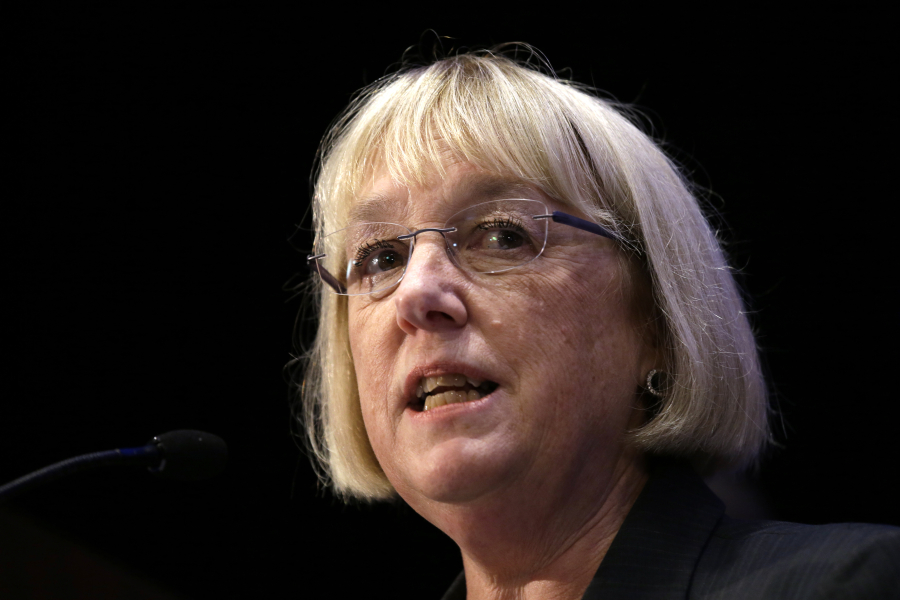Benji lives in a South Seattle neighborhood with his parents, who work at a nonprofit organization and a local school district. With a combined income of $72,000, his family isn’t poor. But when it came time for Benji’s parents to find child care for him, the cheapest option was $10,000 a year. So while they wanted to send him to a place where he could play with and learn from other kids, Benji went to his grandmother’s house.
The story of Benji is one of hundreds compiled by researchers who wrote “Cradle to Kindergarten: A New Plan to Combat Inequality,” which outlines a strategy to fix what they say is an early-learning and child care crisis. (The researchers used pseudonyms for all their participants.)
Sen. Patty Murray, D-Wash., says she has also heard countless stories of families who can’t afford child care, which motivated her to craft a new bill that she discussed Monday at the Redmond YWCA.
Murray’s bill would add more affordable child care options, support universal preschool programs and increase compensation for child care workers. She introduced it this past month, with strong support from Democrats but none yet from Republicans.
“Too many people are paying more than they can (for child care),” Murray said Monday. “It’s a family issue, it’s a community issue, it’s a national issue.”
The Seattle Times spoke with Ajay Chaudry and Christina Weiland, who wrote “Cradle to Kindergarten” with Taryn Morrissey and Hirozaku Yoshikawa.
Your book mentions that the United States ranks low among other developed nations in terms of spending devoted to children under age 5. How did we get to this point?
Chaudry: Our history in the U.S. of being first when it comes to educational investments and creating opportunity for kids is really positive. We were the first country to establish free primary public education, first to expand it, and we were among the first to create a system of state public higher education. But when other countries first created (their) education (systems) … they started with including a lot of nursery school and preschool education, while for us it has been trying to add to what existed.
How does the lack of spending on child care affect students when they enter the K-12 system?
Weiland: One point we make whenever we can is just how very large these gaps are for kindergarten readiness … by income. Most of the eventual achievement gap is in place by that first day of kindergarten. The current system we have is resulting in enormous inequalities.
Chaudry: One thing that people don’t know is the gap is also large between higher-income kids and middle-income kids. The only ones who get (high-quality preschool) are those who have the resources for their kids. The gap is increasing between … the maybe 25 percent who can afford the cost, and everyone else. I don’t think that everyone realizes how much the middle class struggles with these issues just as much as lower-income, working families.



